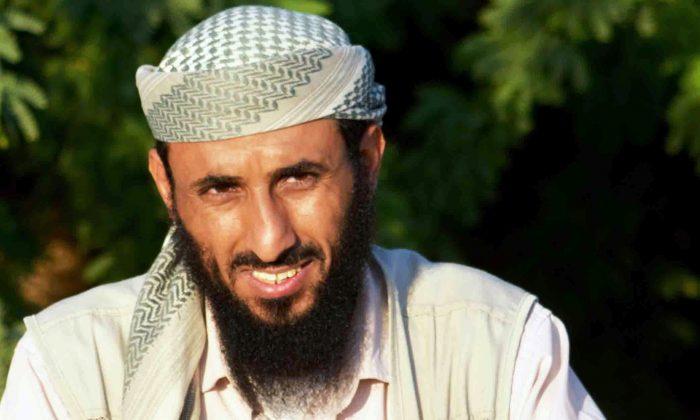The brutal execution of an American photojournalist by radical Islamic militants has been described by some as quintessential terrorist rhetoric. According to former CIA and NSA director General Michael Hayden in an interview last night with Fox News’ Megyn Kelly, the actions taken by members of the Islamic state terrorist group (formerly ISIS or ISIL), represent the very definition of terrorism – “The killing of innocents for political effect.” The Islamic State has vowed to “drown all of you [Americans] in blood“ in a retaliatory action for the American air campaign against their organization in Iraq recently where they suffered an embarrassing defeat and lost the critical Mosul Dam. In the chilling video released by the terrorist group, following the execution of the American journalist James Foley, another American journalist is said to have his life in the balance dependent upon on if the United States continues its air campaign against the radical Islamists.
The United States intelligence community has been assessing the video and senior officials are attempting to craft official media and internal policy responses. Such brutal tactics have been used by terrorists before and have been successful in achieving their goals of initiating and instigating an increased military response by the United States. In the early 2000s al-Qaeda wanted to increase the United States’ military presence in the Middle East (despite previously known strategies by the group indicating the exact opposite). According to a paper published recently by Max Abrahms, professor at Northeastern University, “[Al-Qaeda] military leader, Sayf al Adl, said the main goal of 9/11 was not to coerce the U.S. from the Muslim world, but to provoke American military operations there. According to al Adl, President George W. Bush played into this strategy by pursuing the ‘anticipated response’ in Afghanistan, Iraq, and other Muslim countries.” Abrahms went on to write, “Similarly, bin Laden often said the purpose of 9/11 was ‘for us to provoke and bait this administration’… al-Qaeda leadership was unworried about provoking a U.S. invasion of Afghanistan. In fact, they hoped the U.S. would respond in that fashion and then get bogged down in a costly asymmetric conflict.”
A spokesperson of the Islamic State asserted in a documentary by Vice News speaking to Americans, “Don’t be cowards and attack us with drones. Instead send your soldiers, the ones we humiliated in Iraq…We will humiliate them everywhere, God willing, and we will raise the flag of Allah in the White House.” Could beheading of an American journalist yesterday play into a broader strategy to bait the United States? General Hayden stated in his interview with Kelly last night that “We have already gotten beyond the president’s [limited tactical] rhetoric” in terms of what is happening on the ground in Iraq. In fact according to the Army Times, the United States may increase their military role in Iraq now that Iraq is beginning to form a new government that the US hopes will be more inclusive to all ethnic and religious groups.
General Hayden, a key player in the Bush era policies of spying tactics by the NSA post 9/11 (and to be fair, for a time in the Obama administration as well) also stated in his interview with Kelly, “We need to do more – preventing genocide is a virtue, protecting Americans is a virtue – but we have a fundamentalist radical state in the middle of the Middle East, we cannot let that stand.” The United States should be careful not to make the same mistakes it did in the wake of 9/11 and in subsequent administrations. President Obama has utilized a broad policy of tailoring back overt American military power to a more limited role. Despite many claims that the president does not have a concrete policy or “doctrine,” in the abstract sense, his policy or doctrine can be summed up as one of limited, small footprint, and tactical options.
The brutal video by the Islamic State released yesterday is a propaganda tool to recruit new members and defame the US. The Islamic State is very tech savvy and has used social media to recruit new members and disseminate their messages despite facing a crackdown on Twitter recently with several accounts being deactivated before and after the posting of the execution. In a paper published in 2006, authors Andrew H. Kydd and Barbara F. Walter, professors at the Universities of Pennsylvania and California respectively, wrote, “In targeting the World Trade Center and the Pentagon on September 11, [al-Qaeda] hoped to raise the costs for the United States of supporting Israel, Saudi Arabia, and other Arab regimes, and to provoke the United States into a military response designed to mobilize Muslims around the world.” In fact, in the video posted by the Islamic State yesterday, the executioner stated, “any aggression against the Islamic State is an aggression against Muslims everywhere.”
In crafting a response, the United States must weigh all options and outcomes, which also means analyzing the potential strategies of their enemies. The death of Foley is tragic and demonstrates how brutal these terrorist actors are. The United States has an exhausting challenge to face in 1) dealing with the gains and military might the Islamic State has now achieved, and 2) how to save the life of the other American journalist featured in the video posted by the Islamic State. General Hayden stated in terms of intelligence analysis, the US intelligence community is trying to answer the question, “Is there anything we [the United States] can do to prevent [further violence against Americans]?” Hopefully we will get the answer to this question soon.



Friends Read Free